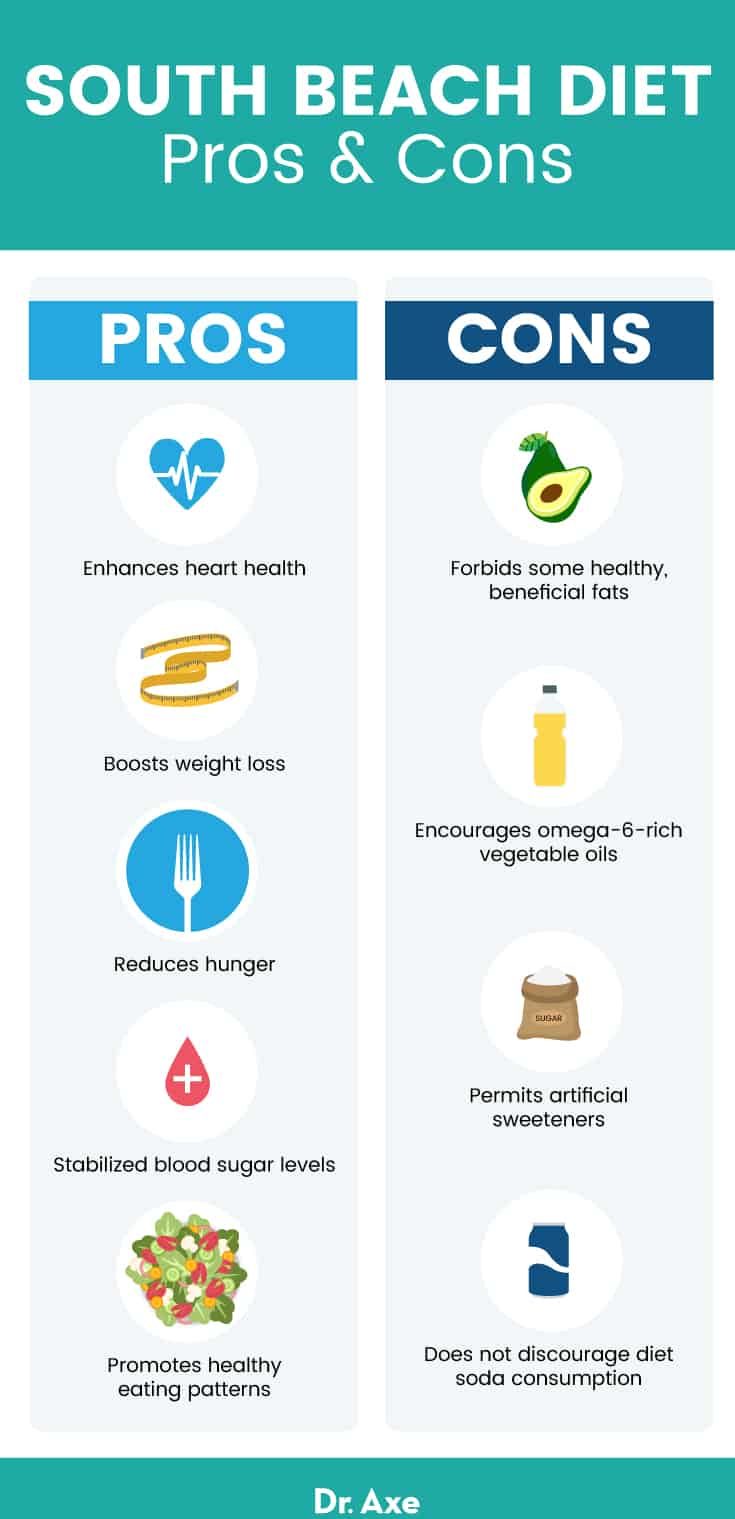This Dr. Axe content is medically reviewed or fact checked to ensure factually accurate information.
With strict editorial sourcing guidelines, we only link to academic research institutions, reputable media sites and, when research is available, medically peer-reviewed studies. Note that the numbers in parentheses (1, 2, etc.) are clickable links to these studies.
The information in our articles is NOT intended to replace a one-on-one relationship with a qualified health care professional and is not intended as medical advice.
This article is based on scientific evidence, written by experts and fact checked by our trained editorial staff. Note that the numbers in parentheses (1, 2, etc.) are clickable links to medically peer-reviewed studies.
Our team includes licensed nutritionists and dietitians, certified health education specialists, as well as certified strength and conditioning specialists, personal trainers and corrective exercise specialists. Our team aims to be not only thorough with its research, but also objective and unbiased.
The information in our articles is NOT intended to replace a one-on-one relationship with a qualified health care professional and is not intended as medical advice.
South Beach Diet Benefits & Its 3 Phases
May 30, 2023

Developed with the intent of aiding in weight loss while simultaneously improving health, the South Beach Diet is more than just a short-lived fad diet.
In fact, this diet has seen massive success in the decades since its creation and has been credited with an array of benefits — like improved heart health, enhanced weight loss and steady blood sugar levels.
It emphasizes some of the core principles of healthy eating but breaks it down to keep it simple and easy to follow, making it a good fit for those looking to take the first step toward better health.
What Is the South Beach Diet?
The South Beach Diet is a heart-healthy, low carb diet created by cardiologist Dr. Arthur Agatston in the 1990s.
He noticed that his patients were able to easily lose weight when following a low-carb, high-fat diet like the Atkins diet, but he wanted to also cut the risk of heart disease by prioritizing complex carbohydrates and unsaturated sources of fat.
Based in Miami, Dr. Agatston renamed the diet from the “Modified Carbohydrate Diet” to the “South Beach Diet” after the neighborhood near his practice. The South Beach Diet was published in 2003. A few years later in 2008, a new version was released that included a 20-minute daily interval training program designed to be used in conjunction with the diet. In 2015, Nutrisystem acquired the rights to the South Beach trademark
The South Beach Diet is broken up into three phases. The first phase is the most restrictive and limits high-carbohydrate foods like fruits and grains. The second phase is slightly more lax but still focuses on unsaturated sources of fat, lean proteins and complex carbohydrates. While these first two phases are geared toward weight loss, the final phase of the diet is designed to help with weight maintenance instead.
While some people have criticized the diet as nothing more than a fad diet, there are many studies demonstrating that following this type of eating pattern could come with health benefits that extend far beyond weight loss.
Benefits
1. Enhances Heart Health
The main concept of the South Beach Diet is to lose weight while also protecting the health of your heart by including a plethora of anti-inflammatory foods, such as fish, vegetables and healthy fats, in your diet.
A 2015 study published in the Journal of the American College of Cardiology showed that replacing 5 percent of daily calories from saturated fats, which are not allowed on the South Beach Diet, with an equal amount of calories from polyunsaturated or monounsaturated fats, which are encouraged on the diet, decreased the risk of coronary heart disease by 25 percent (PUFAs) and 15 percent (MUFAs), respectively.
Meanwhile, another study in the American Journal of Clinical Nutrition demonstrated that a high-carbohydrate diet leads to increased levels of bad cholesterol and triglycerides compared to a high-fat diet.
2. Boosts Weight Loss
Of course, the main reason that most people start the South Beach Diet plan is to lose weight fast. But does it really work?
One 2007 study from the College of Health and Human Development’s Department of Nutritional Science at Penn State University had 20 participants follow the South Beach Diet for 12 weeks. At the end of the study, participants lost an average of 11 pounds and two inches of waist circumference.
Additionally, multiple studies have found that low-carb, high-protein diets can be effective when it comes to reducing energy intake and amping up weight loss.
3. Reduces Hunger
One of the main bonuses of the South Beach Diet is that you shouldn’t feel hungry like you may on other diets. In fact, skim through South Beach Diet reviews and you’re unlikely to see too many complaints about hunger levels, especially compared to other more restrictive diets.
Research has shown that eating diets high in carbohydrates can increase levels of ghrelin, also known as the “hunger hormone,” which acts as a hunger cue for your body.
In a 2009 study, eating a meal high in carbohydrates led to a drop in ghrelin levels followed by a quick jump right back up. Similarly, levels of peptide YY, a hormone that reduces appetite, showed a similar spike and crash after eating.
The South Beach Diet focuses on limiting carbohydrate intake and choosing high-fiber foods and whole grains instead, which can digest more slowly and help keep you feeling full.
4. Stabilizes Blood Sugar Levels
Although the first phase of the South Beach Diet eliminates grains, starches and fruits, the remainder of the plan emphasizes selecting whole grain, high-fiber carbohydrates over those that have been refined and processed.
Fiber slows the absorption of sugar in the bloodstream, preventing blood sugar levels from shooting up after eating. Including plenty of high-fiber foods in your diet, such as whole grains, can help you maintain normal blood sugar.
Additionally, the Penn State study published in the Journal of Nutrition mentioned above even found that following the South Beach Diet for 12 weeks led to a decrease fasting insulin levels.
Insulin is the hormone responsible for transporting sugar out of the bloodstream and into the tissues. Sustaining high levels of insulin for long periods of time can desensitize your body to the effects of insulin and lead to insulin resistance, making it harder for it to work effectively and resulting in an increase in blood sugar.
5. Promotes Healthy Eating Patterns
While the South Beach Diet is not without its flaws, it does promote following a well-rounded, healthy eating pattern that is sustainable and easy to follow.
In fact, pay a visit to any doctor or dietitian and you’re likely to get advice similar to what the South Beach Diet promotes: Swap out refined carbohydrates for whole grains, eat plenty of vegetables, minimize added sugars, opt for lean sources of protein and go for healthy types of fat.
The South Beach Diet is a good starting place for those just starting out because it provides meal plans and sorts foods into easy-to-follow categories. Ultimately, though, it’s really just encouraging generally healthy eating guidelines that can help you lose weight and attain better health.

Downsides
While the South Beach Diet does boast plenty of impressive health benefits, there are some negative aspects that should be considered as well, especially when it comes to the types of fat included in the diet.
Coconut oil, for instance, is strictly forbidden because it’s considered a saturated fat. However, studies show that coconut oil benefits everything from heart health to brain function thanks to its content of medium-chain fatty acids.
Additionally, although saturated fats have long been vilified and classified as unhealthy and dangerous, studies have found that saturated fat intake is actually not associated with an increased risk of heart disease, stroke or diabetes.
This diet also encourages the consumption of vegetable oils, which are highly processed and rich in omega-6 fatty acids. Most people consume a diet too high in omega-6 fatty acids and low in omega-3 fatty acids. A high ratio of omega-6 to omega-3 fatty acids can contribute to chronic inflammation.
Furthermore, while limiting your sugar intake is always a good thing, the South Beach Diet allows you to eat artificial sweeteners and even diet soda, both of which have been tied to adverse health conditions.
Guidelines
Now that we’ve covered the pros and cons of the South Beach Diet, you may be wondering: “How does the South Beach Diet work?”
The diet is divided into three phases. The first two phases are dedicated to weight loss while the final phase is for weight maintenance.
Phase One
The first phase lasts for 14 days and is considered the most restrictive phase of the diet as high-carbohydrate foods like fruits and starches are not allowed. On average, people tend to lose the most weight during this phase.
How many carbs per day? You’ll be limited to 50 grams of net carbs each day.
During this South Beach Diet phase one, you should eat three meals per day made up of non-starchy vegetables, lean sources of protein, and some healthy fats and legumes. You may also eat two snacks per day composed of both lean proteins and non-starchy vegetables.
Foods that are allowed during this phase include:
- Lean proteins, such as fish, lean cuts of beef or pork, poultry, eggs, and low-fat cheese
- Non-starchy vegetables
- Monounsaturated fats like olive oil, canola oil or avocado oil
- Vegetable and seed oils
- Nuts and nut butters
- Seeds
- Beans, peas and lentils (up to 1/2 cup per day)
- Sugar-free snacks (up to 100 calories per day)
- Sugar substitutes, including stevia
- Avocado
- Olives
- Coffee
- Tea
- Vegetable juice
- Sugar-free/diet soda (though I don’t recommend these)
Foods to avoid include:
- Grains
- Fruits and fruit juices
- Fatty meat, fish and poultry
- Foods with added sugar
- Whole milk
- Starchy vegetables, like carrots, potatoes, beets, peas, corn and yams
- Alcohol
- Butter
- Coconut oil
Phase Two
After the first phase is over, you begin the second phase, which lasts until you reach your weight loss goal. The goal is to lose one to two pounds per week for the duration of this phase.
You can eat the same foods as the first phase, but you are allowed to consume one to three servings of fruits and one to four servings of whole grains and starchy vegetables per day as well as certain types of alcohol, like light beer or dry wine.
Phase Three
Once you’ve achieved your weight goal, you enter this final phase for weight maintenance. Although the guidelines of the second phase still apply, you’re allowed to indulge in the occasional cheat meal, and no foods are officially off limits in this final phase.

Modifications
Whether you’re looking to lose weight fast or improve your overall health without meticulously calculating calories or micronutrients, the South Beach Diet can be a safe and effective choice.
It can be especially useful if you’re just starting out on your journey to healthy eating and need some extra guidance about how to make better choices. Thanks to the wealth of information, resources and recipes that are out there for the South Beach Diet, it is easy to follow and practically foolproof, no science degree necessary.
Of course, you can also make a few minor modifications to negate some of the drawbacks of the diet. For example, go for extra-virgin olive oil or avocado oil instead of picking highly processed vegetable oils when cooking, and use stevia in place of artificial sweeteners to help optimize the health benefits of this diet.
Additionally, once you get going, look at it as more of a lifestyle than a diet. You’re bound to see more success by changing your mindset and focusing on improving your overall health rather than simply reducing your waist size.
South Beach Diet vs. Keto Diet
The South Beach Diet is often compared to the ketogenic diet, a diet that has gained rapid popularity recently thanks to the multitude of benefits it offers.
The ketogenic diet is a very high-fat, low-carb diet that is designed to switch the body from using glucose (sugar) to ketones (fat) as its main source of energy.
In the ketogenic diet, approximately 80 percent of your calories should come from healthy sources of fat, including both saturated and unsaturated fats. In the South Beach Diet, the emphasis is placed more on including high-fiber, low-glycemic carbohydrates, unsaturated fats and lean sources of protein. Although the South Beach Diet does include plenty of fat, it’s not designed to put you into ketosis as the ketogenic diet should.
Both diets can be effective when it comes to weight loss and disease prevention. However, most people find that one or the other fits in better with their lifestyles and personal preferences.
Precautions
The South Beach Diet can be an easy and effective way to lose weight for most people and can be followed with minimal risks or side effects.
Because the original diet plan allows for the consumption of vegetable oils that are highly processed and rich in inflammatory omega-6 fatty acids, be sure to go for healthier alternatives like extra-virgin olive oil or avocado oil instead. You should also minimize your use of artificial sweeteners and select natural sweeteners like stevia.
Additionally, to get the most from the South Beach Diet, it’s best to put the focus on whole, unprocessed foods rather than opting for South Beach Diet frozen meals or prepared convenience foods that may technically fit into the criteria for the diet.
As always, be sure to listen to your body, eat intuitively and consult with your doctor if you have any concerns while following this diet.
Final Thoughts
- The South Beach Diet is a diet with three phases and is designed to aid in weight loss and promote heart health.
- It emphasizes high-fiber, low-glycemic carbohydrates, unsaturated fats and lean sources of protein with limited refined or added sugars.
- In addition to promoting weight loss, the diet may also improve heart health, reduce hunger, lower blood sugar levels and support healthy eating patterns.
- Certain healthy saturated fats like coconut oil are eliminated from the diet while heavily processed and inflammatory vegetable oils are allowed, so I recommend swapping out the processed foods with healthier, natural alternatives.
- For most people, following the South Beach Diet with a few minor modifications can be a safe and effective way to lose weight and achieve better health.













